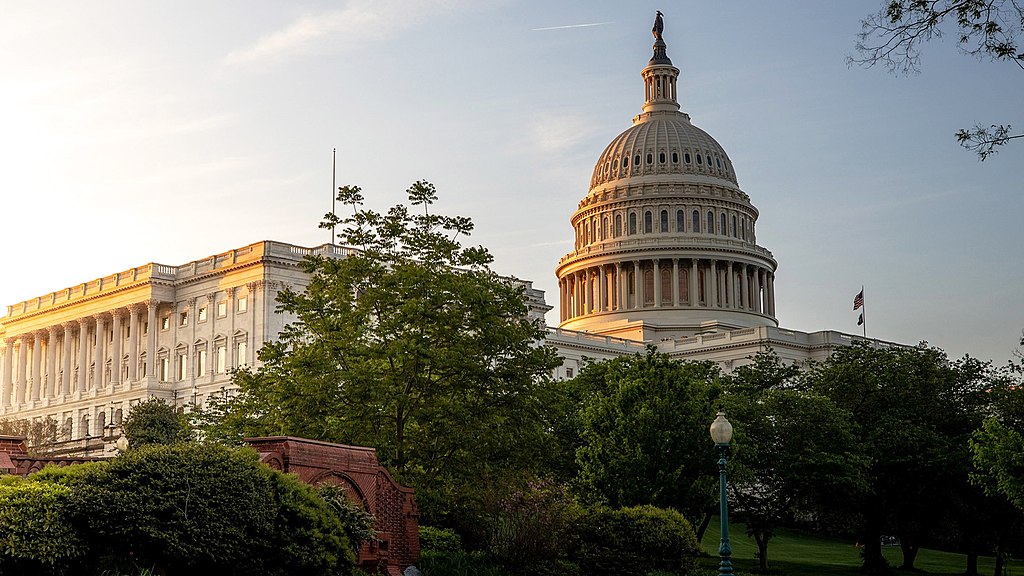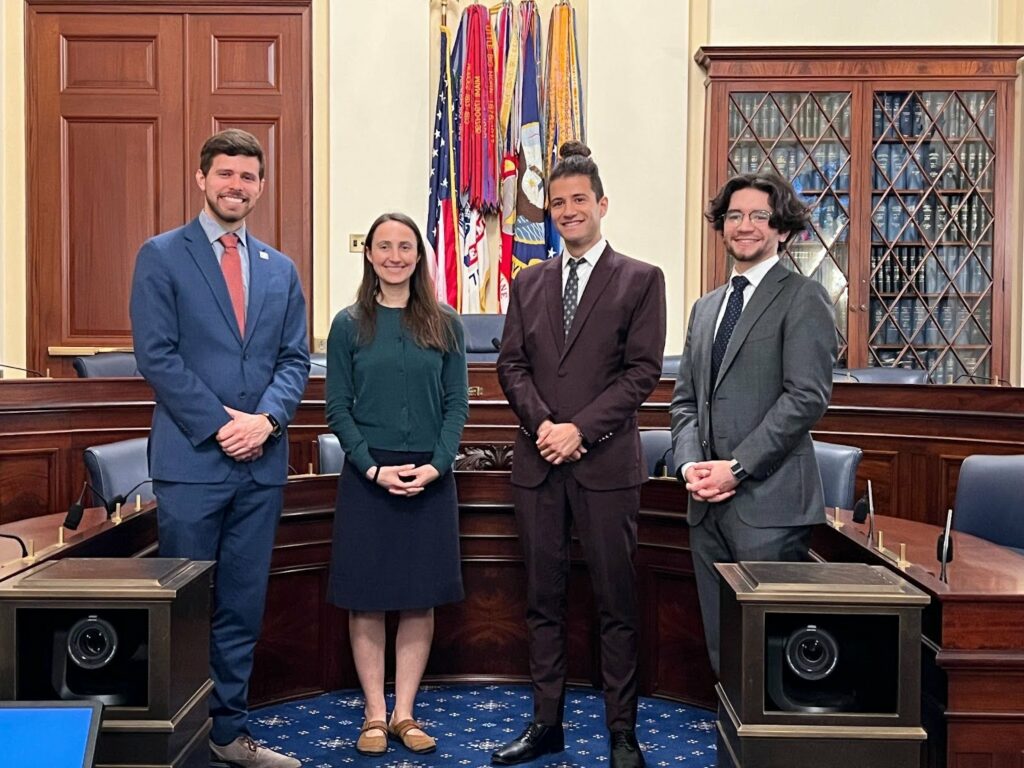54 years since the first Earth Day, the US is still focusing on highway expansion. In light of increasing greenhouse gas (GHG) emissions, due in part to the Infrastructure Investment and Jobs Act (IIJA), Transportation for America and its partners engaged the Future of Transportation Caucus to brief Congress on transportation decarbonization. We explained that to truly decrease emissions we need to electrify transportation systems and support travel options beyond private vehicles.

In a briefing on Capitol Hill, T4A Policy Associate Corrigan Salerno showed how highway expansion funds in the IIJA dwarfed historic investments in public transit leading to disastrous GHG emissions increases. The short and sweet of it is that mode-shift needs to be coupled with electrification to decrease our GHG emissions. Taylor Reich from the Institute for Transportation & Development Policy explained that coupling electrifying transportation with mode shift (opportunities to travel outside of a car) will save the government and private citizens trillions, lower energy consumption, and lower emissions.
Miguel Moravec from the Rocky Mountain Institute and Move Minnesota advocate Katie Jones described how states are already incorporating electrification and mode shift into policy. Minnesota’s Climate Action Framework and Colorado’s GHG Transportation Planning Standard require transportation infrastructure projects to abide by local GHG reduction targets. Thanks to these regulations, major highway expansion plans have been set aside in favor of bus rapid transit, active transportation networks, and transit oriented development.
The path forward
Most of the funding for highway expansion projects comes from formula funds with few strings attached, giving state departments of transportation (DOT) the option to expand aggressively. With the Senate voting 53-47 against mandating DOTs and metropolitan planning organizations (MPO) to track their GHG emissions, Congress is not helping increase transparency into our state transportation investments or halt endless highway growth.
Colorado and Minnesota are already implementing solutions and Maryland is trying to catch up. The federal government must meet their decarbonization efforts by bringing these state-level approaches to a national scale.
And there’s a path forward to do just that. Legislation such as Senator Markey’s GREEN Streets Act requires minimum standards for GHG, vehicle miles traveled (VMT), and air pollution reductions. It would also require DOTs and MPOs to publicize the environmental and health impact data for large expansion projects.
We already know that transportation decarbonization is necessary for fighting climate change. Electrifying all cars, a lofty goal on its own, won’t be enough to solve our climate crisis. Goal setting and transparency are integral to decarbonization. Without building more public transportation, establishing more active transportation infrastructure, and giving people the freedom to travel outside of a car, we won’t make significant progress. To truly respect our planet, our federal leaders must do more to address mode shift and electrification.

The post Congressional briefing emphasizes electrification and public transit to meet climate goals appeared first on Transportation For America.









